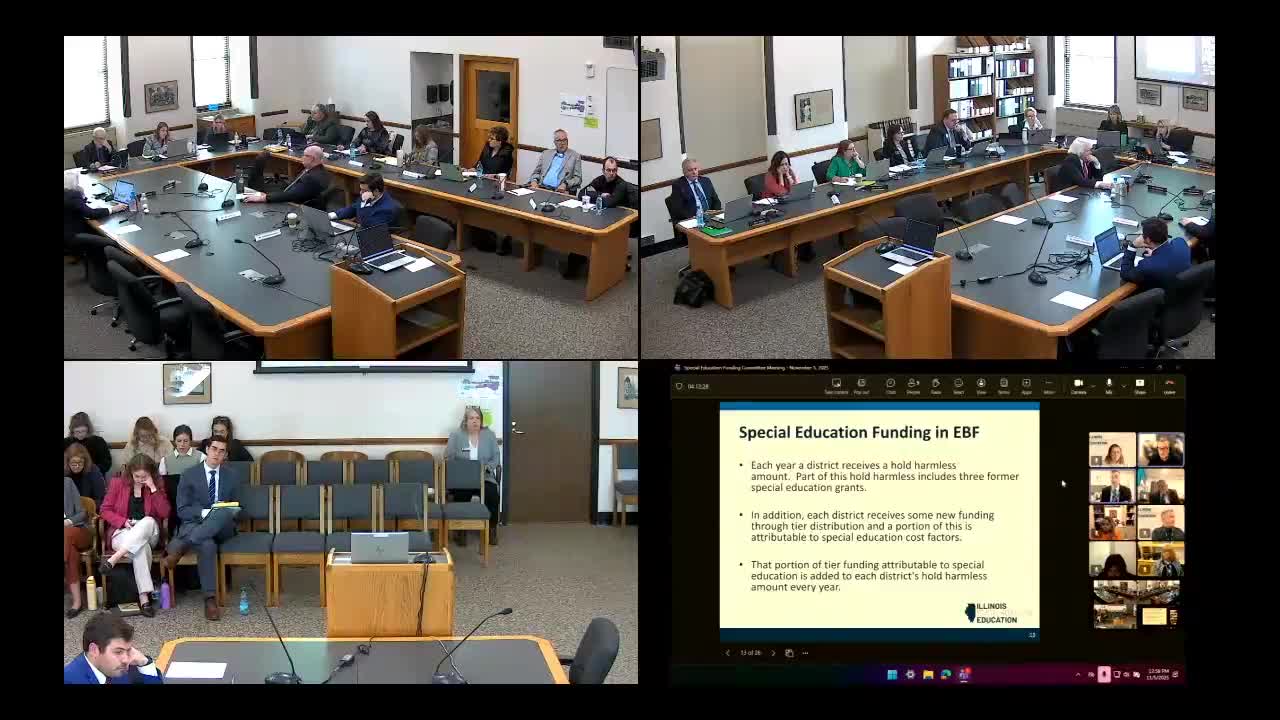North Dakota DPI provides state special‑education counts, cautions against funding by placement or disability
November 05, 2025 | Legislative, North Dakota

This article was created by AI summarizing key points discussed. AI makes mistakes, so for full details and context, please refer to the video of the full meeting. Please report any errors so we can fix them. Report an error »

Mary McCarville O'Connor, director of specialty design services at the North Dakota Department of Public Instruction, presented the committee with updated counts and data caveats about students with disabilities in North Dakota public schools, parentally placed private schools and home‑educated populations.
DPI staff emphasized a key legal and policy constraint: federal IDEA and related regulations bar states from structuring funding to incentivize more‑restrictive placements or allocating dollars solely on the basis of a child’s disability or the setting in which services are provided. "Children with disabilities placed in, by their parents in private schools do not have the same right protections under IDEA," DPI said in the presentation, noting that local districts must consult with private schools and provide proportionate services when required.
DPI said counts include children receiving IEP services and those with service plans for home education. Staff cautioned that parentally placed private students and home‑educated students may not receive the same array of services and that state data may not capture all parentally placed students who receive no services from the LEA.
Committee members asked for details on growth of specific categories: autism and "other health impairment" showed marked increases over the past decade; DPI staff pointed to changes in diagnostic practices and earlier identification as contributing factors and confirmed that North Dakota does not use a separate "multiple disabilities" category in state coding.
What lawmakers asked: Members asked whether DPI could provide disaggregated counts by severity and by district. Chair Richter and lawmakers also discussed how home‑education service plans operate and how private placements are counted differently from public IEPs.
Sources: Presentation and slides by Mary McCarville O'Connor and follow‑up comments by Adam Tesher (DPI school finance officer), committee transcript.
DPI staff emphasized a key legal and policy constraint: federal IDEA and related regulations bar states from structuring funding to incentivize more‑restrictive placements or allocating dollars solely on the basis of a child’s disability or the setting in which services are provided. "Children with disabilities placed in, by their parents in private schools do not have the same right protections under IDEA," DPI said in the presentation, noting that local districts must consult with private schools and provide proportionate services when required.
DPI said counts include children receiving IEP services and those with service plans for home education. Staff cautioned that parentally placed private students and home‑educated students may not receive the same array of services and that state data may not capture all parentally placed students who receive no services from the LEA.
Committee members asked for details on growth of specific categories: autism and "other health impairment" showed marked increases over the past decade; DPI staff pointed to changes in diagnostic practices and earlier identification as contributing factors and confirmed that North Dakota does not use a separate "multiple disabilities" category in state coding.
What lawmakers asked: Members asked whether DPI could provide disaggregated counts by severity and by district. Chair Richter and lawmakers also discussed how home‑education service plans operate and how private placements are counted differently from public IEPs.
Sources: Presentation and slides by Mary McCarville O'Connor and follow‑up comments by Adam Tesher (DPI school finance officer), committee transcript.
View full meeting
This article is based on a recent meeting—watch the full video and explore the complete transcript for deeper insights into the discussion.
View full meeting
